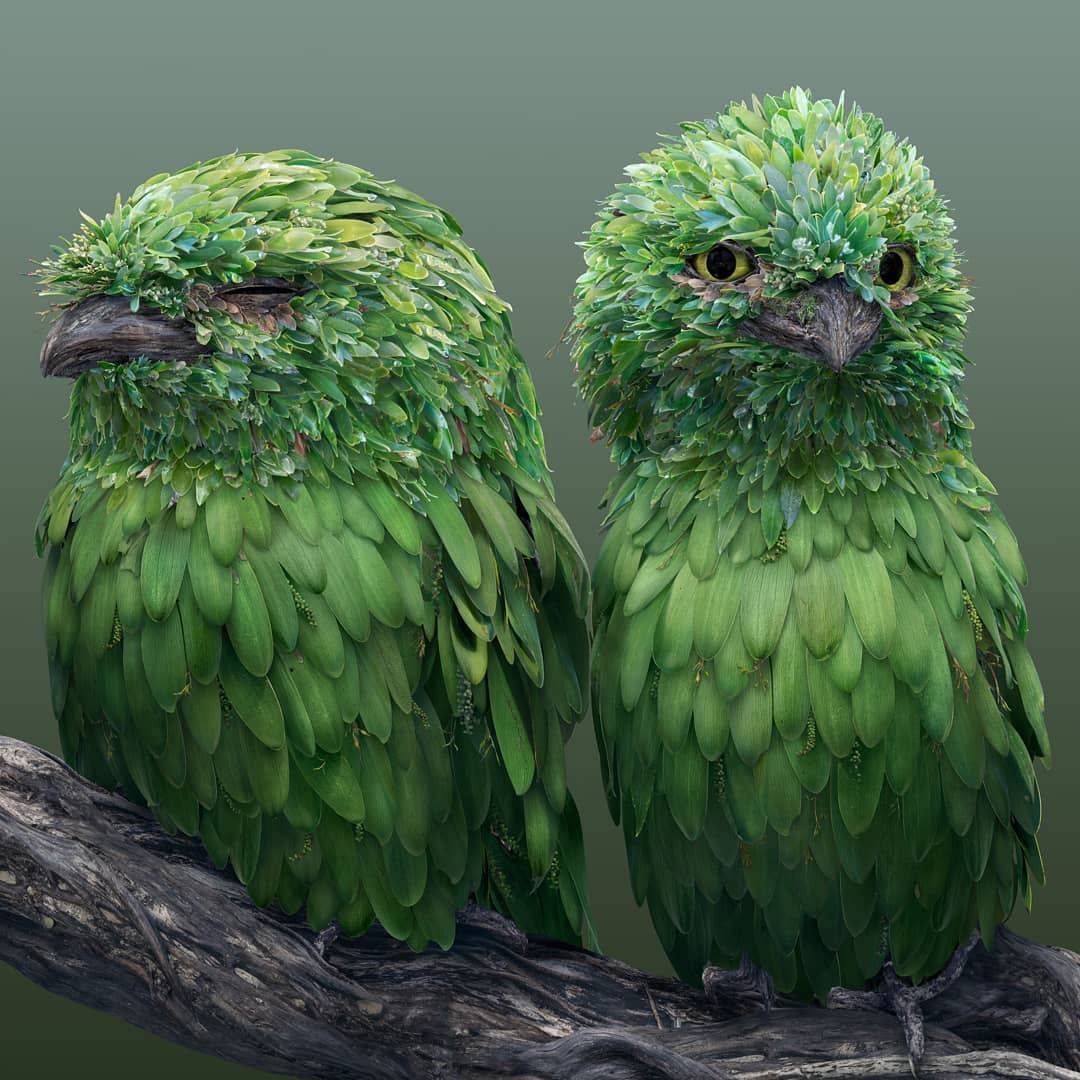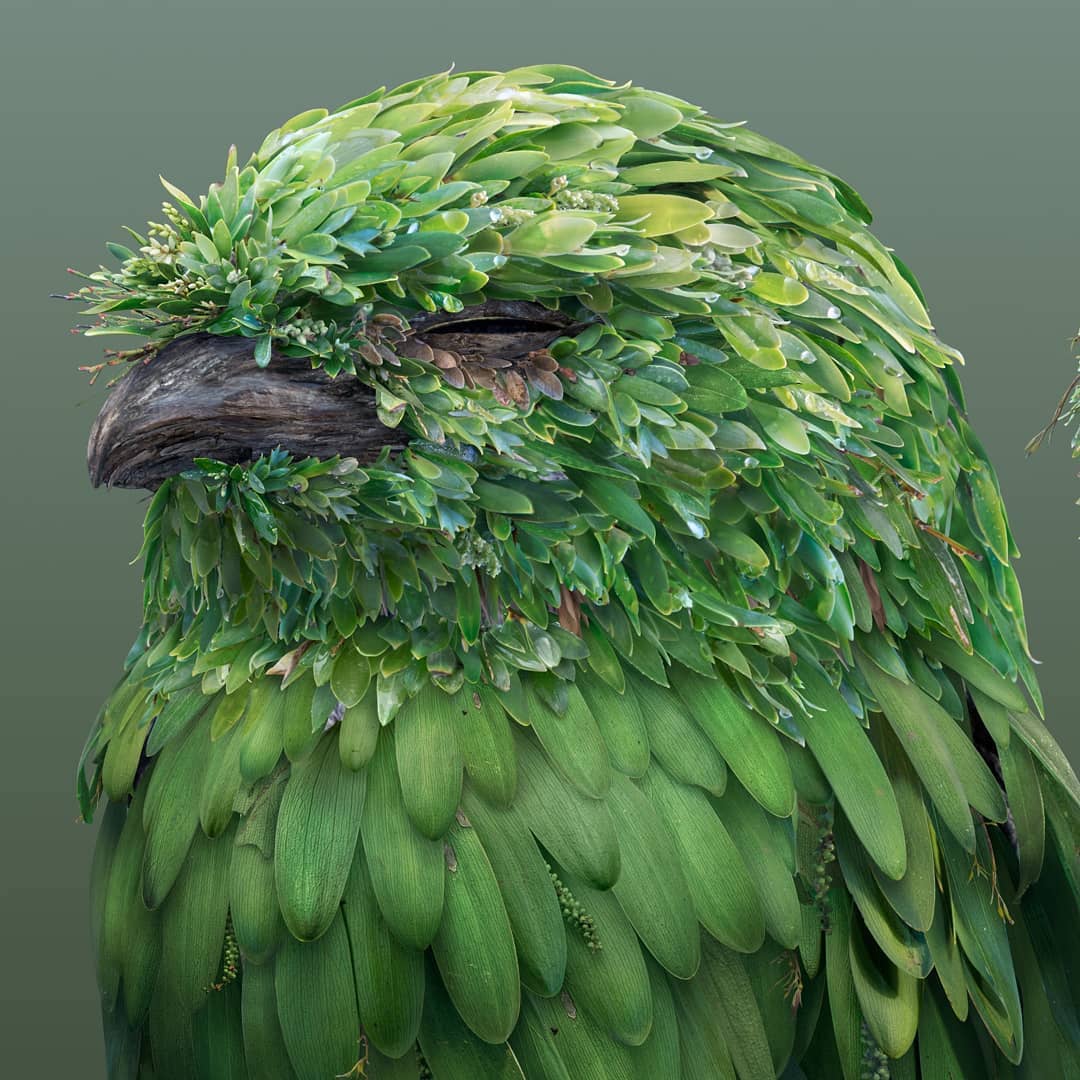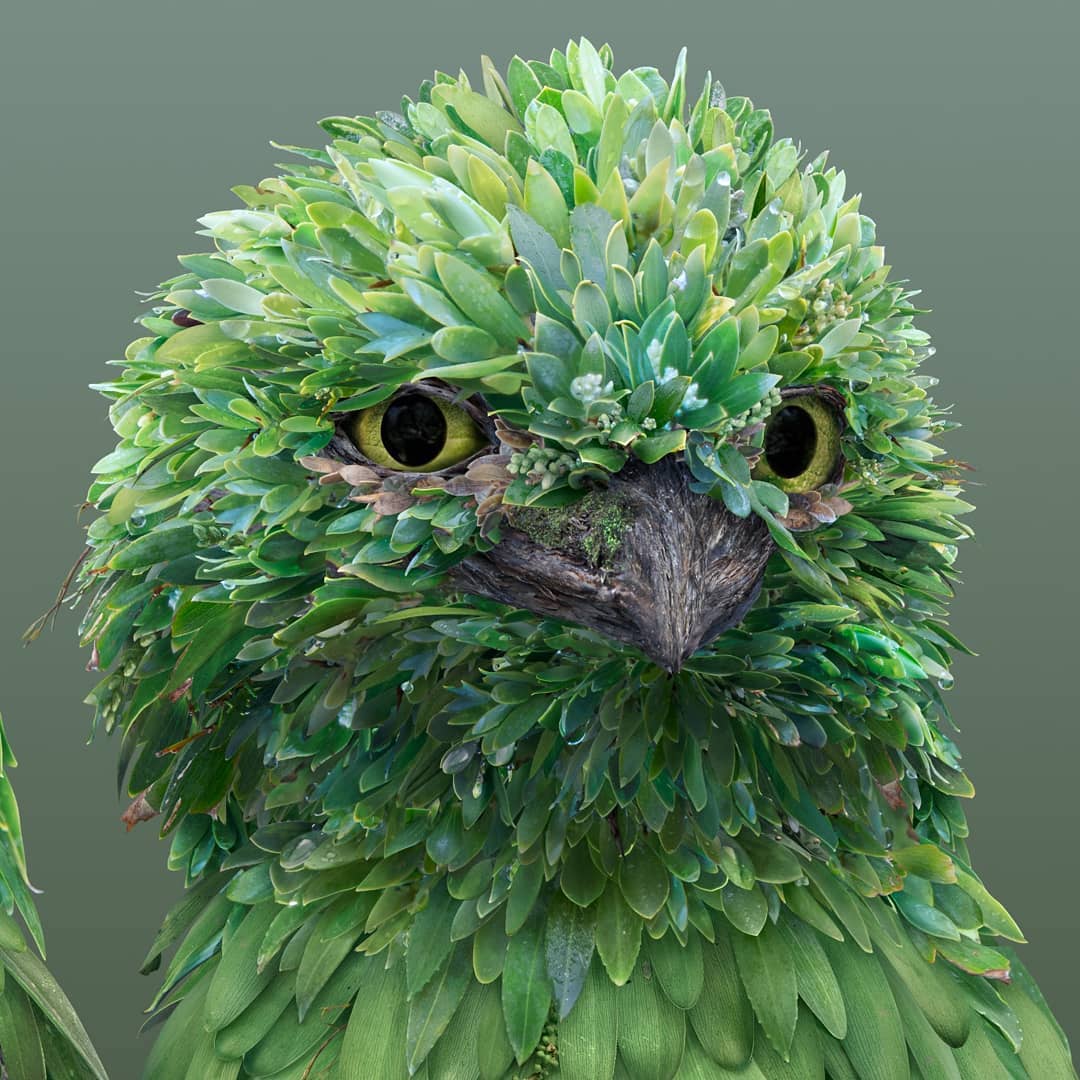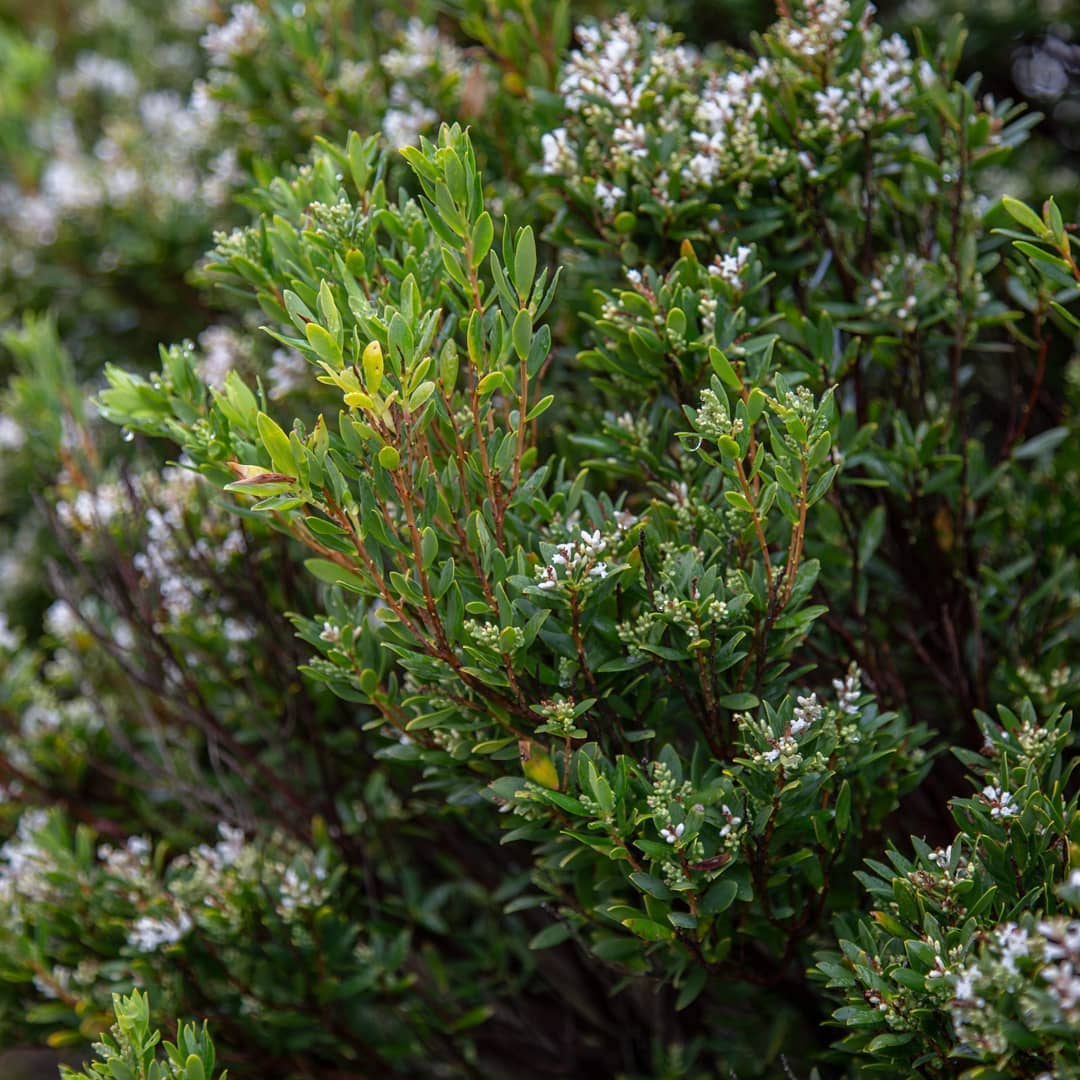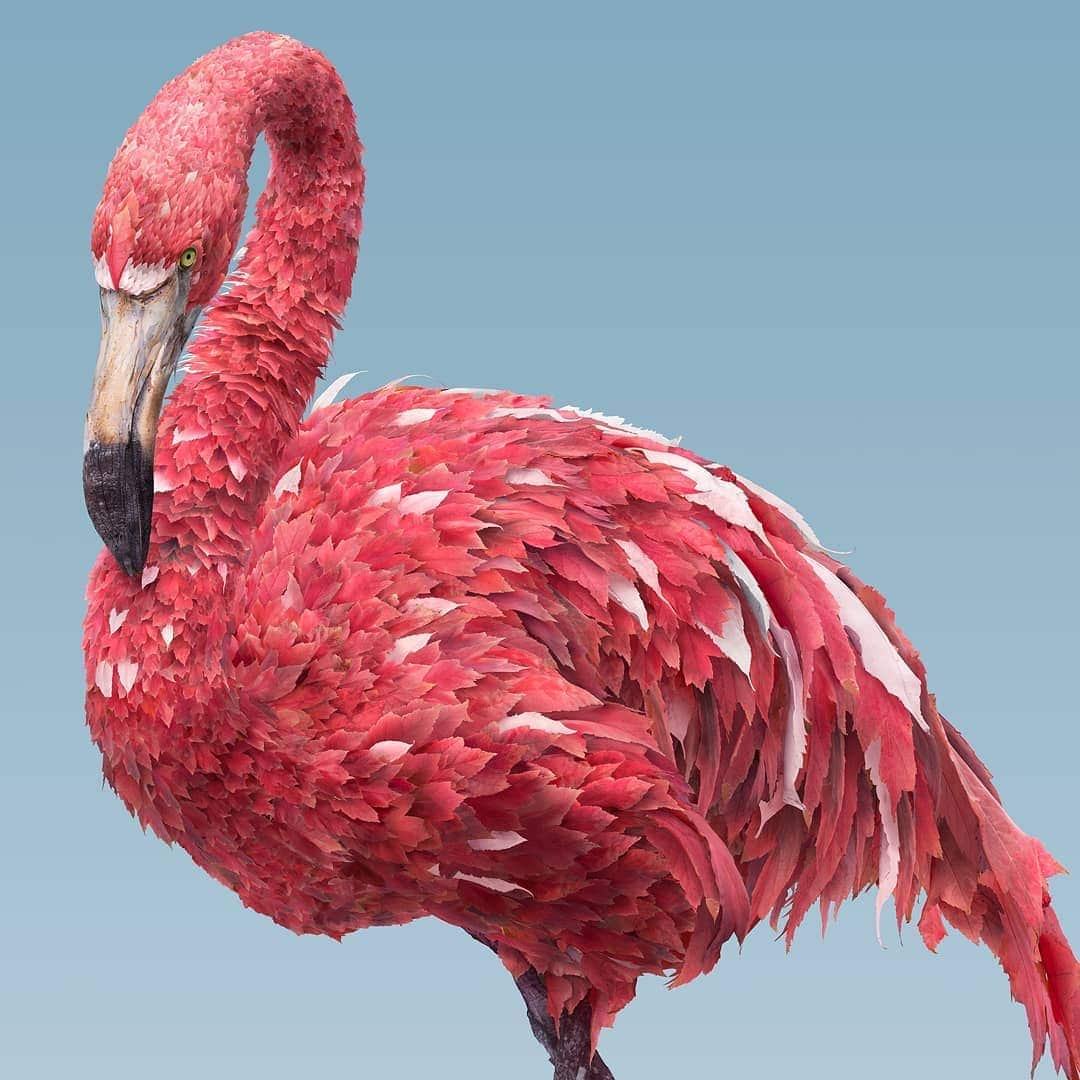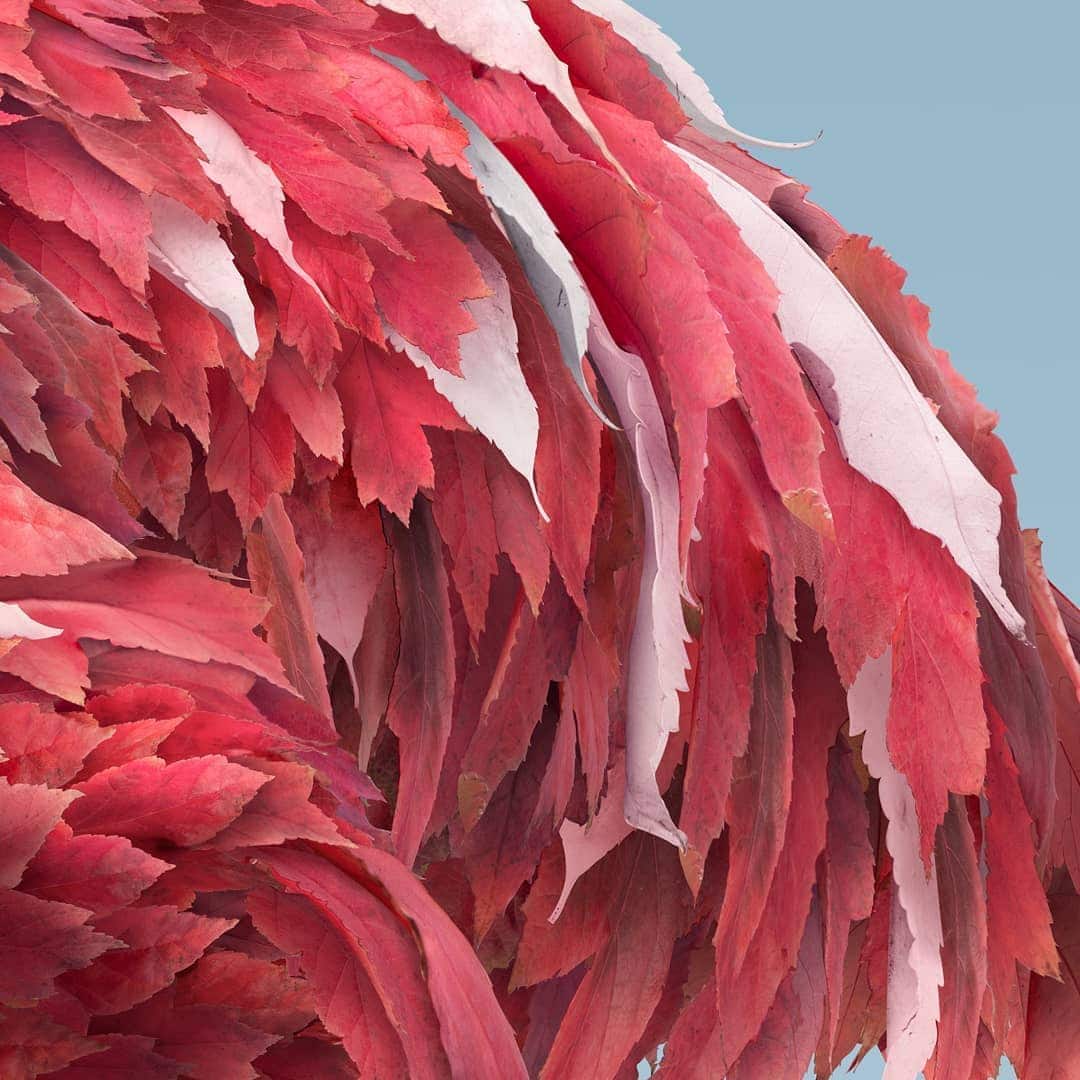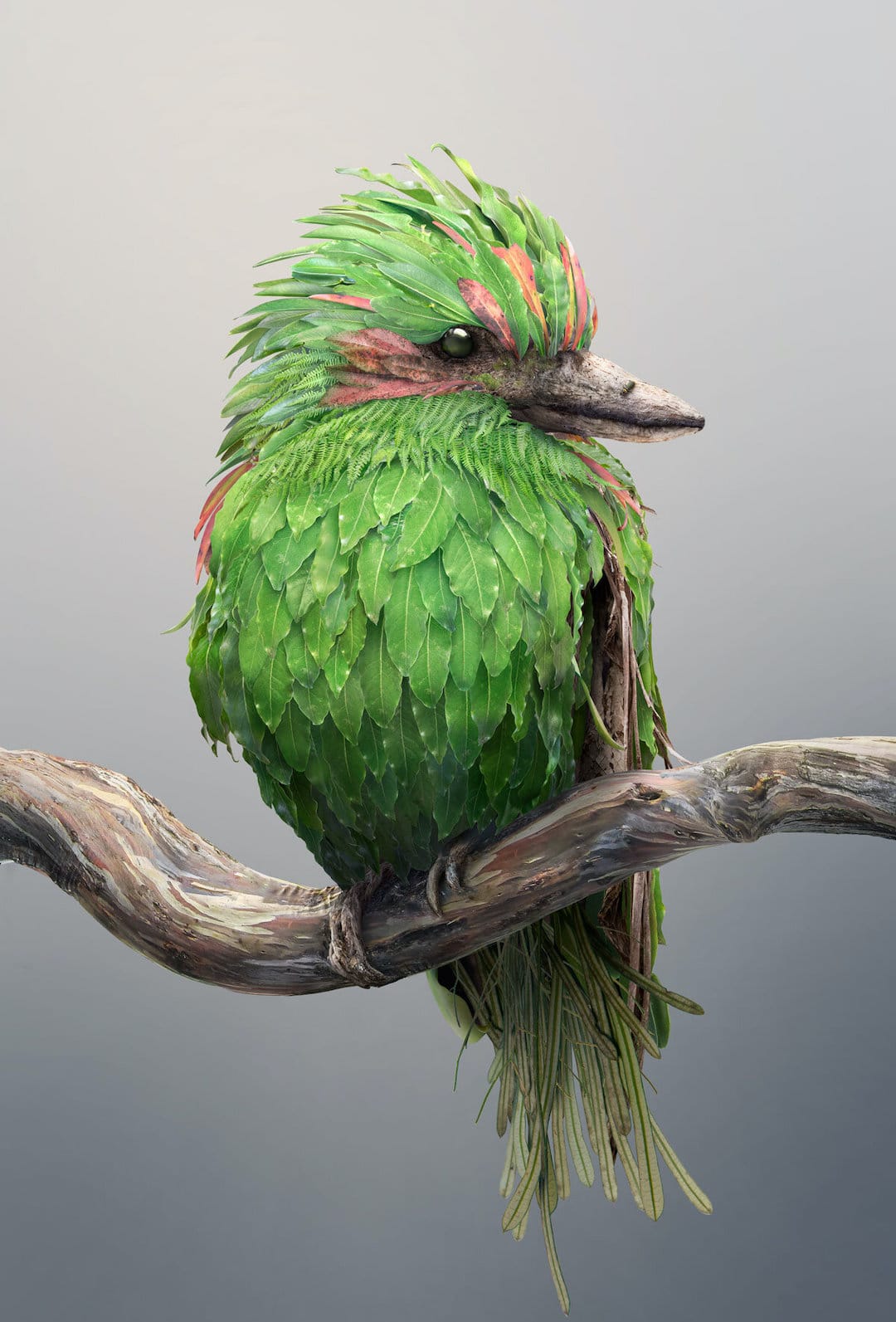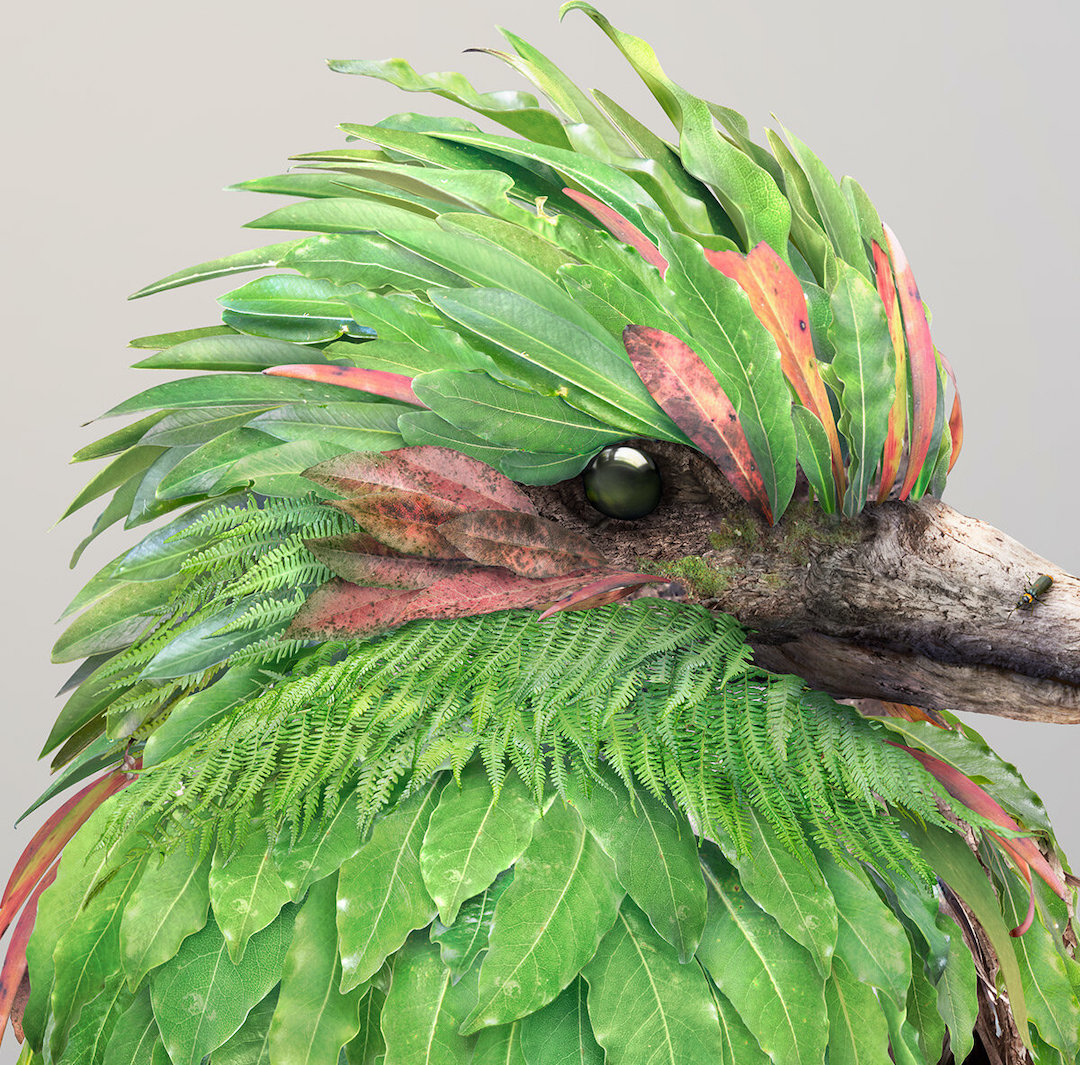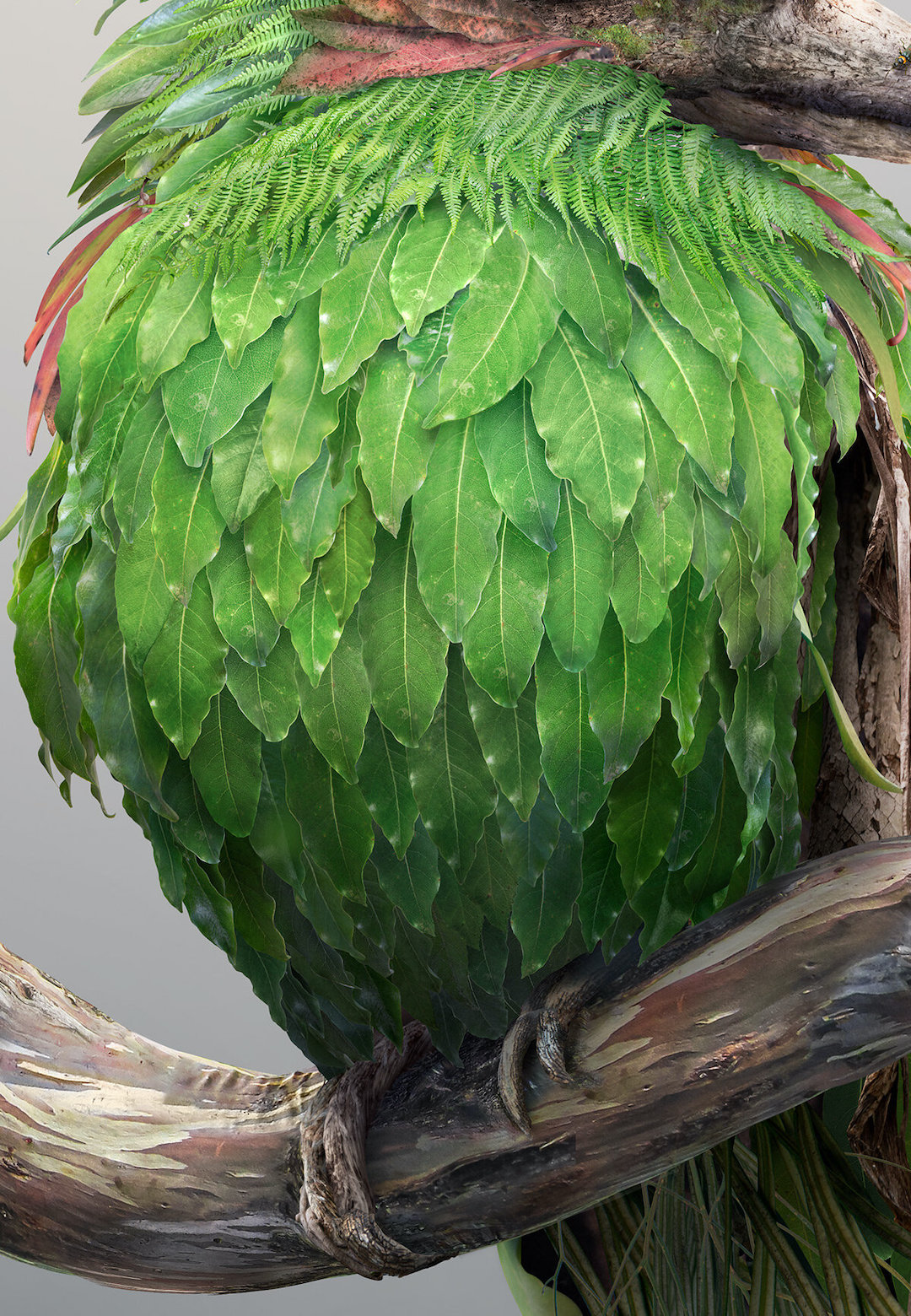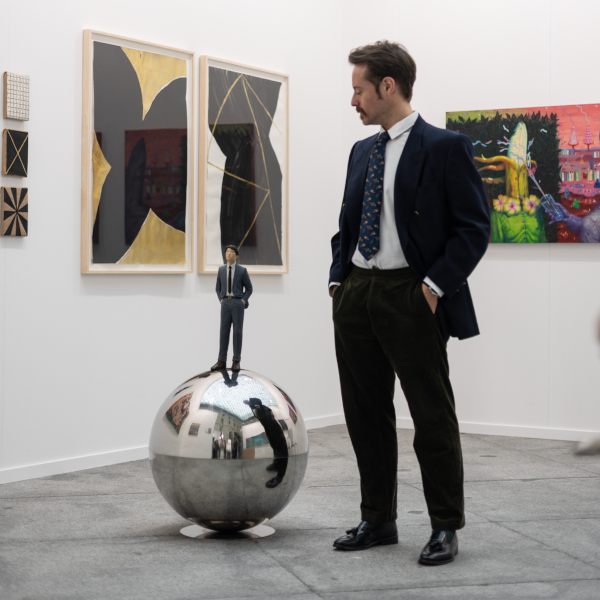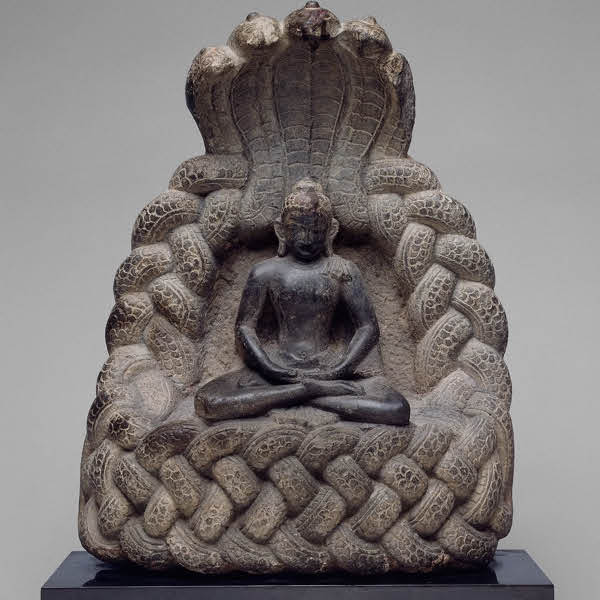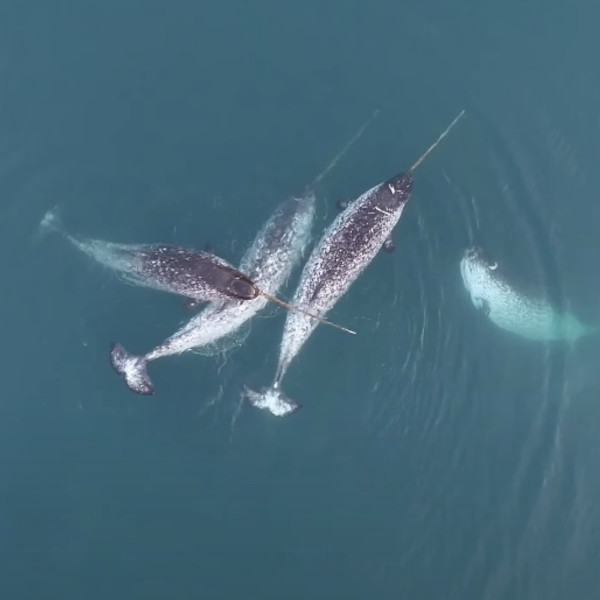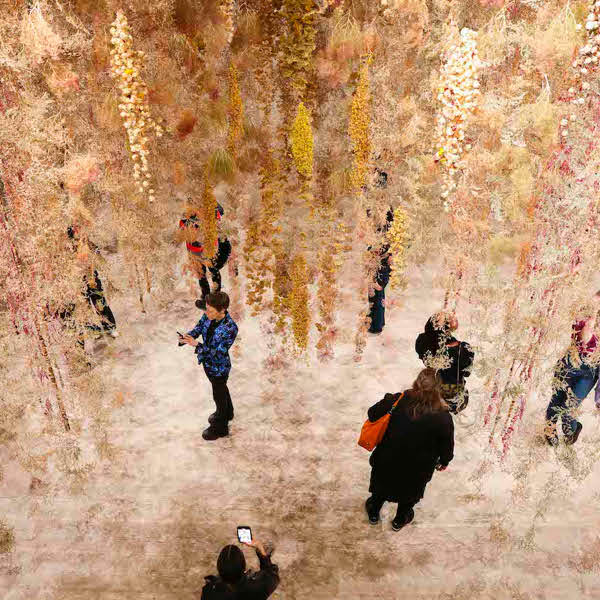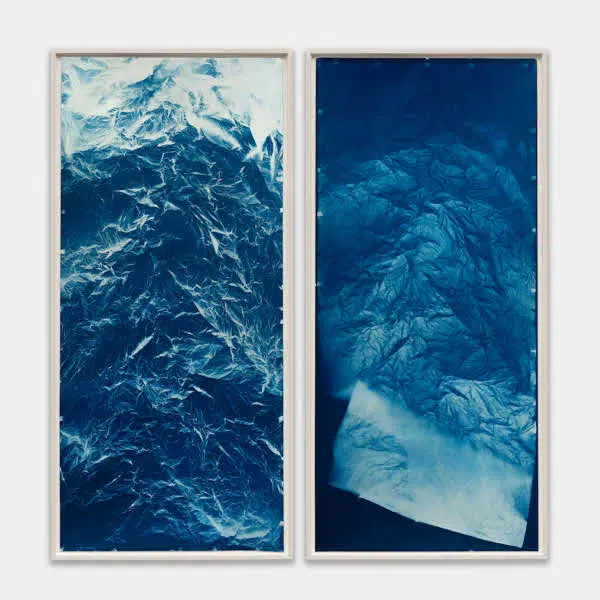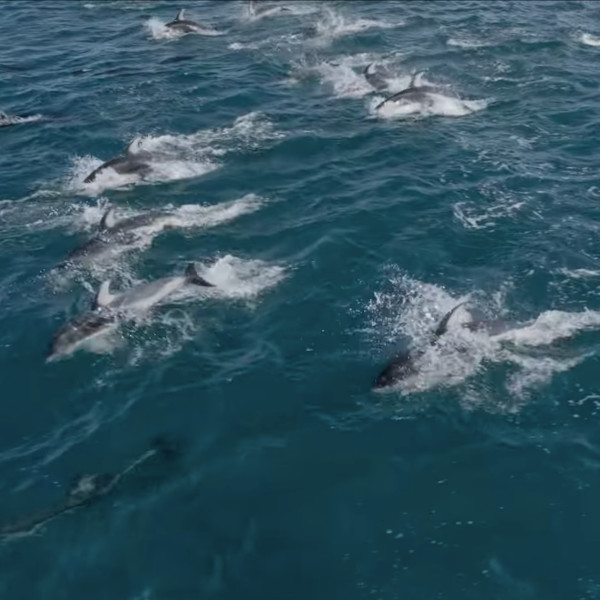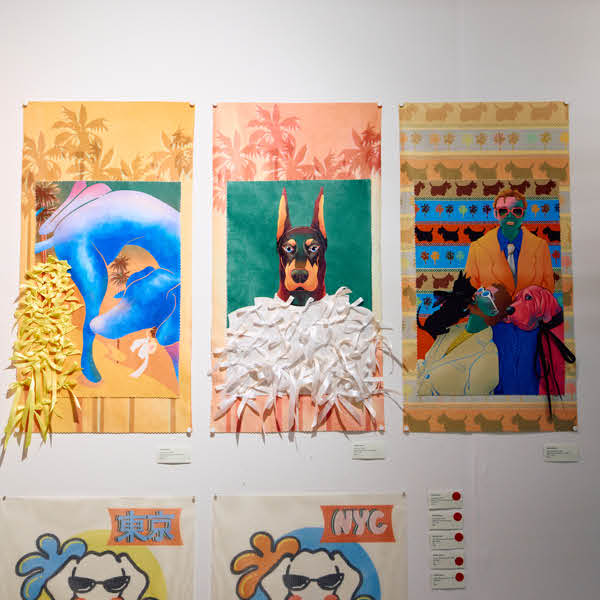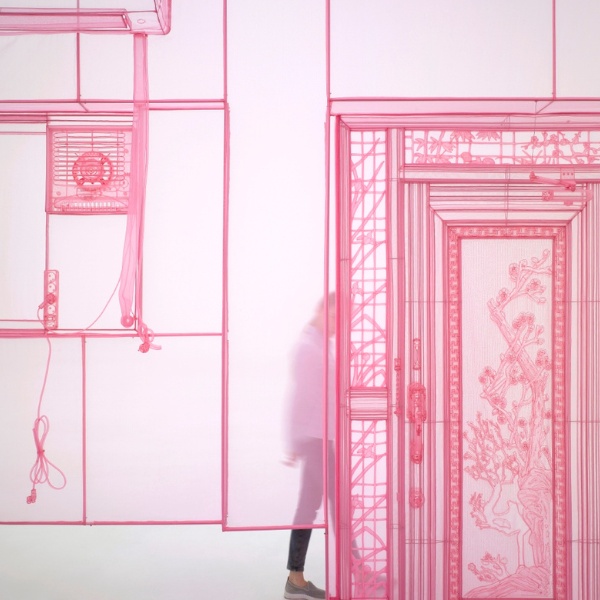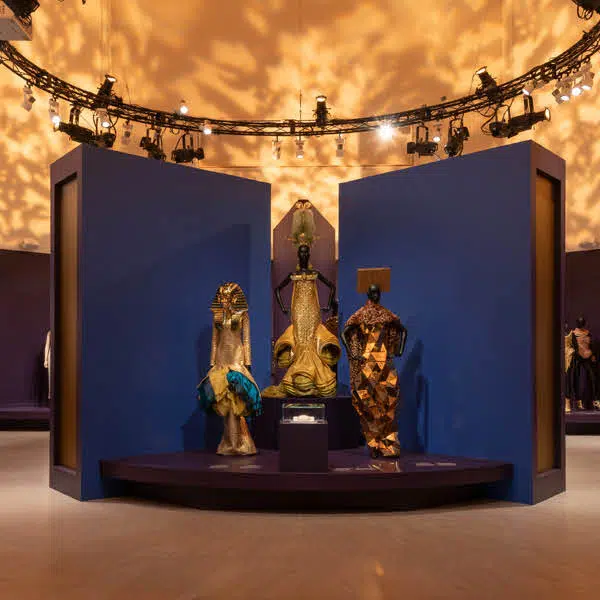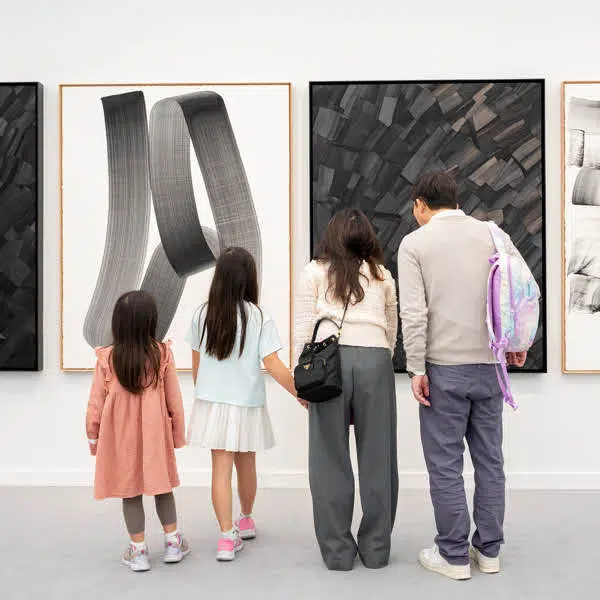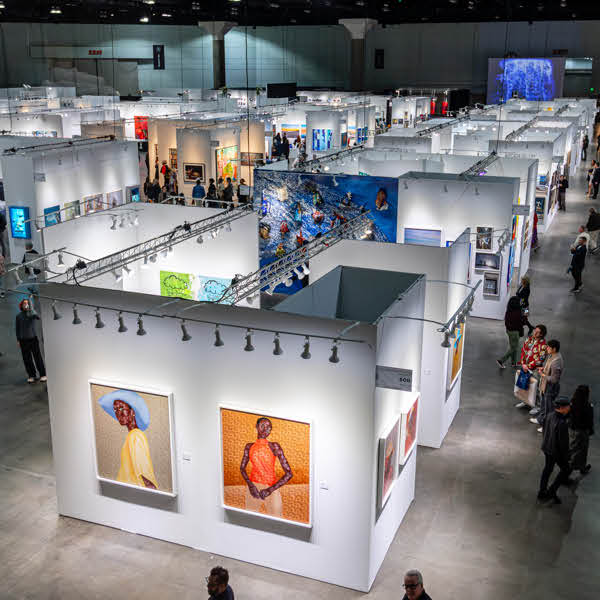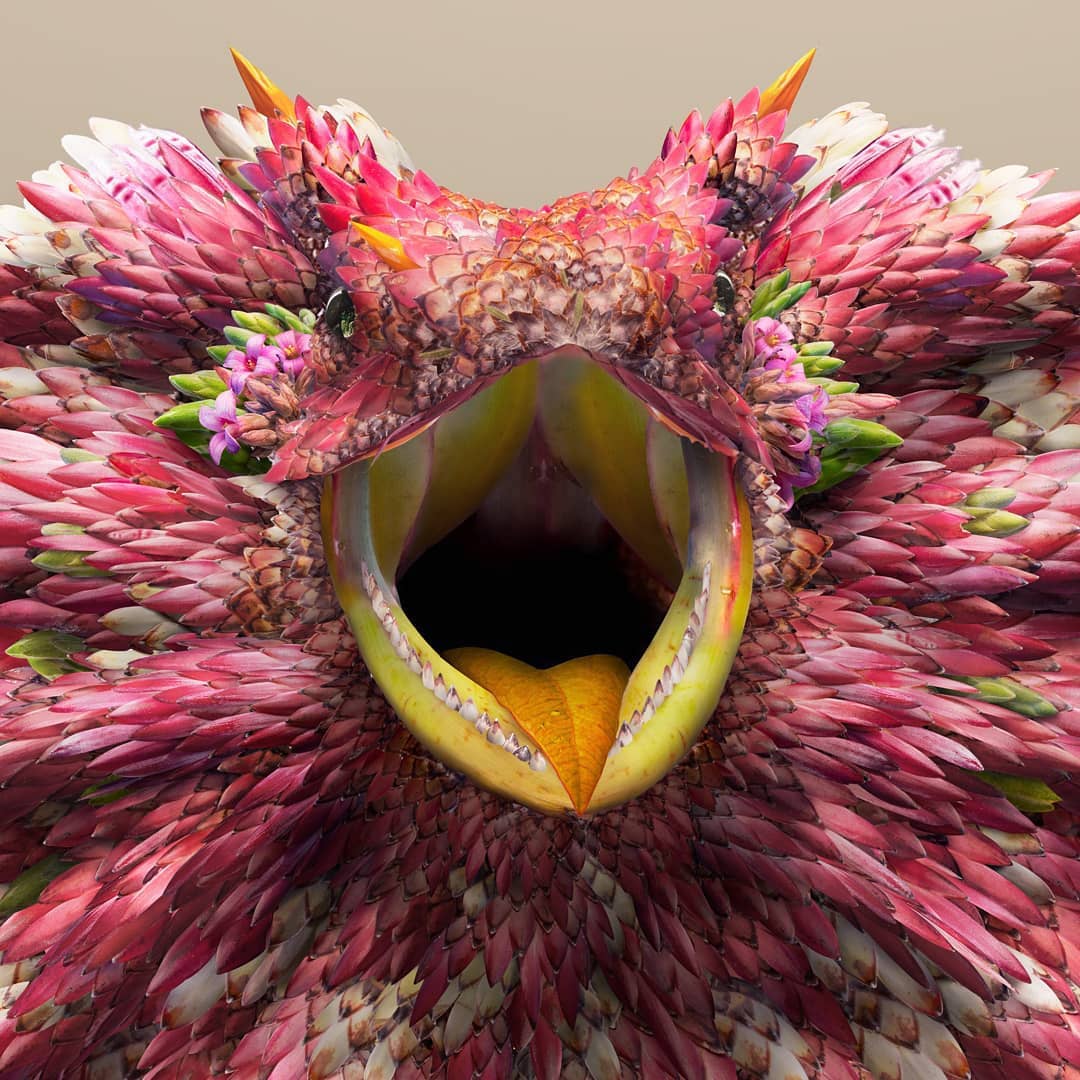
What if feathers, fur, and scales were actually just flower petals and leaves? Australian photographic illustrator Josh Dykgraaf reimagines animals composed entirely from found natural materials. His digitally rendered series, titled Terraform, reminds us of the visible patterns found in nature. His latest works in particular highlight the similarity in shape between petals and reptile scales, as well as leaves and feathers. Each creature looks like some sort of hybrid species from an alien planet.
The inspiration for Terraform came from a simple realization. “I was surfing through some images I'd shot on a totally different project and had the observation that some rock formations in the Swiss Alps looked like the skin of an elephant,” Dykgraaf tells My Modern Met. “That became the first piece in the project, Ourea.” The artist adds, “I then started applying that idea to other forms—noticing that some leaves resemble the feathers of a bird for example, or that magnolia flower petals look like scales.”
During lockdown in Australia, Dykgraaf began working with flower petals and leaves, since the natural materials could be sourced close by. He says, “Basically, I was finding whatever I could in the short radius we were allowed near my home, as we couldn't travel.” From a curled-up pangolin crafted from magnolias to a reptile made from overlapped protea petals, each arrangement captures the scaly texture of Dykgraaf’s subjects. In other works, the artist replicates bird plumage using different types of leaves.
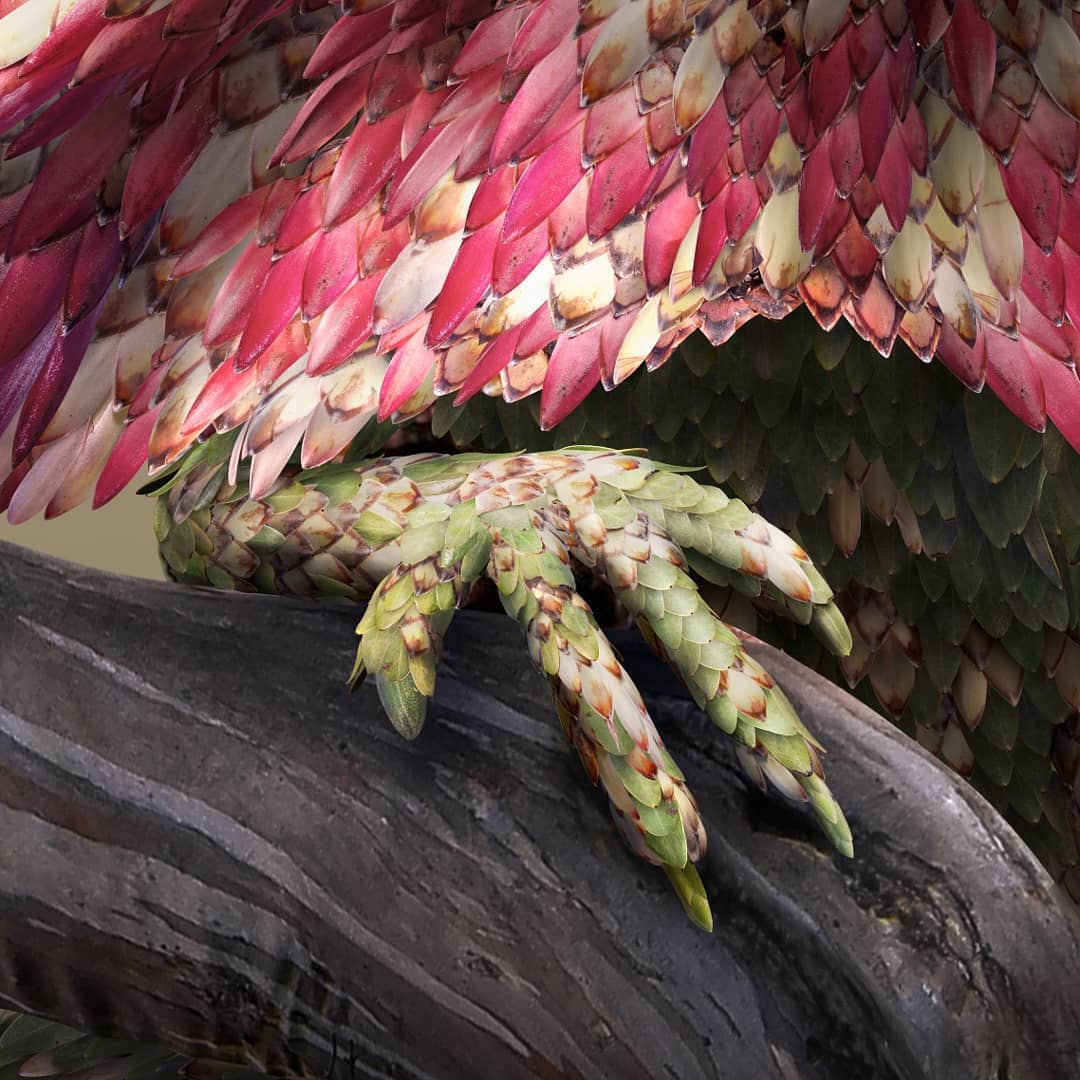
Dykgraaf's artwork is incredibly complex and requires a lot of patience. The average piece usually takes around 30–60 hour to complete, and has around 2,000 to 3,000 layers in Photoshop! “The first challenge of course is the amount of time that this style takes, but of course I'm becoming much more efficient at it the more I do,” explains the artist. “The primary challenge is in shooting all the material I need though. I need to be thorough in the angles I get of various landscapes, perhaps waiting for the right time of day—which isn't always possible to find something that fits all of an animal's anatomy. Sometimes I need to get creative with solutions.” During the pandemic, Dykgraaf has been able to set up a home studio in his kitchen. There, he has a small lighting set up where he can shoot the leaves and flower petals at different angles.
Dykgraaf’s Terraform series isn’t just impressive to look at though; it also highlights the importance of our planet’s species. “As the project has gone on I've moved on to working on other issues that I care about,” says Dykgraaf. “The devastation we experienced here in Australia with the bushfires last year killed some three billion animals and are projected to push koalas to extinction in the wild in the coming decades, which motivated me to travel to the fire fields and create a series of work based on the material I shot there.” He adds, “I have a couple of series in the works along these lines that I plan to release later this year.”
Check out Dykgraaf’s Terraform series below and follow him on Instagram to keep up to date on his new works.
Photographic illustrator Josh Dykgraaf creates digitally rendered images of animals and birds, composed entirely from found flowers and leaves.
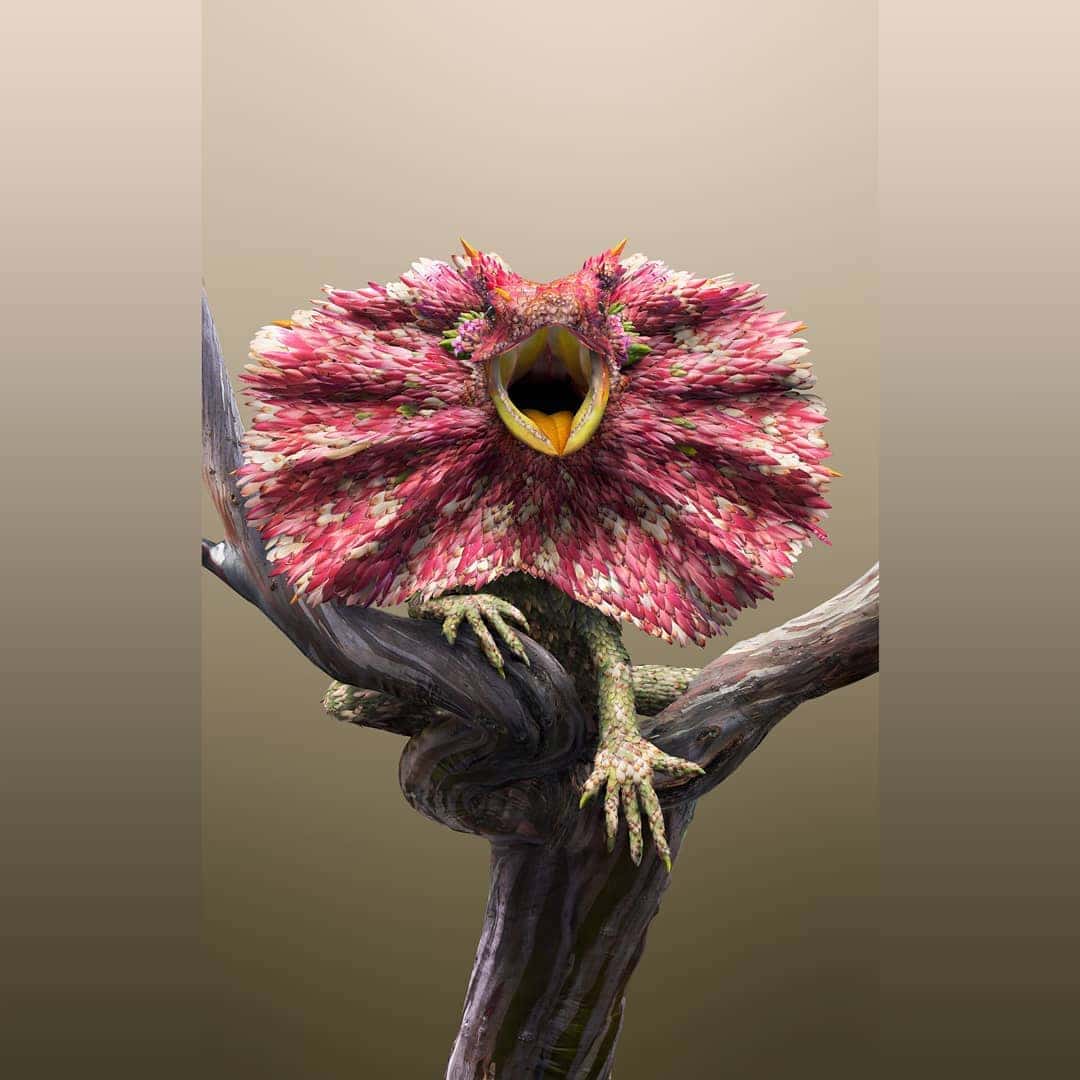
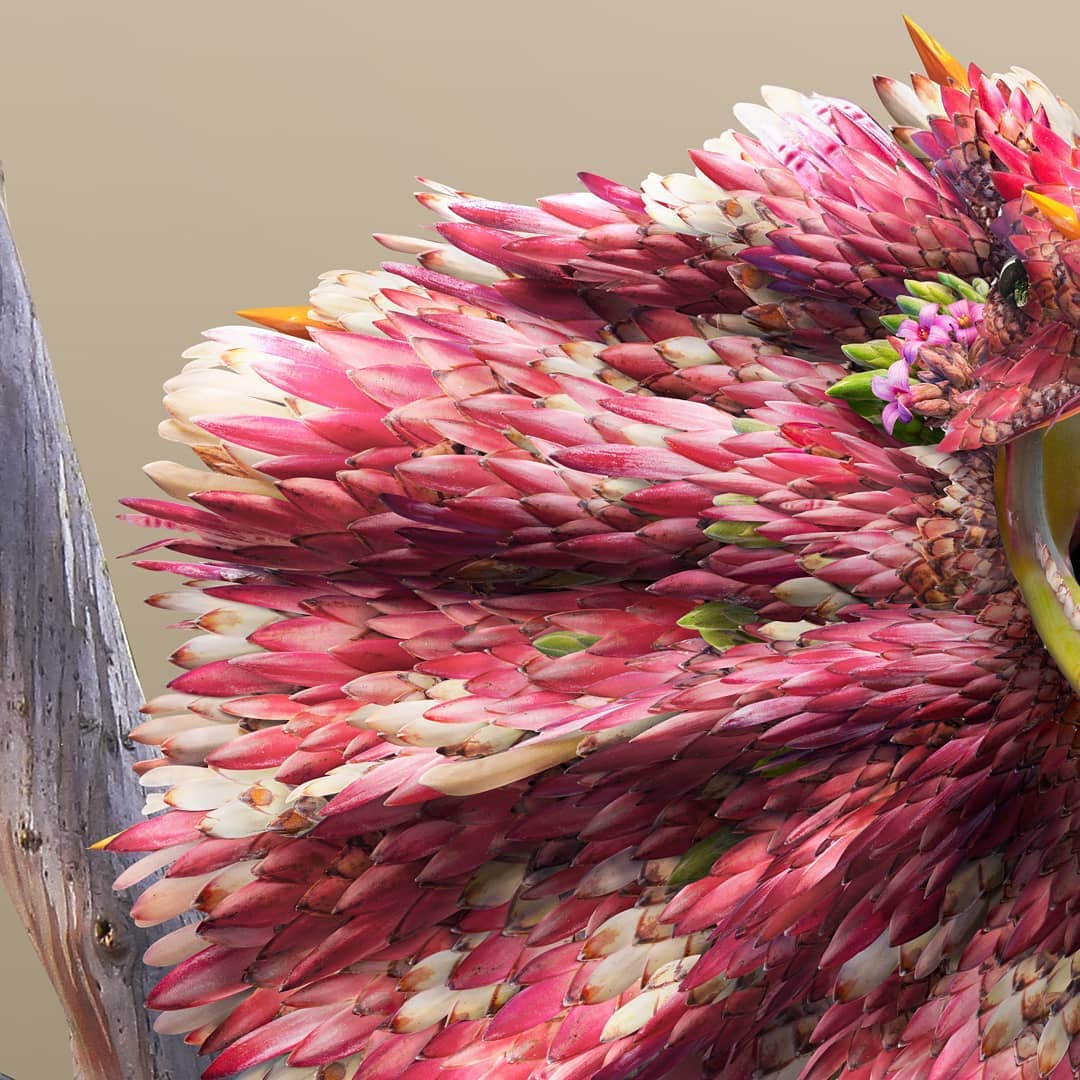
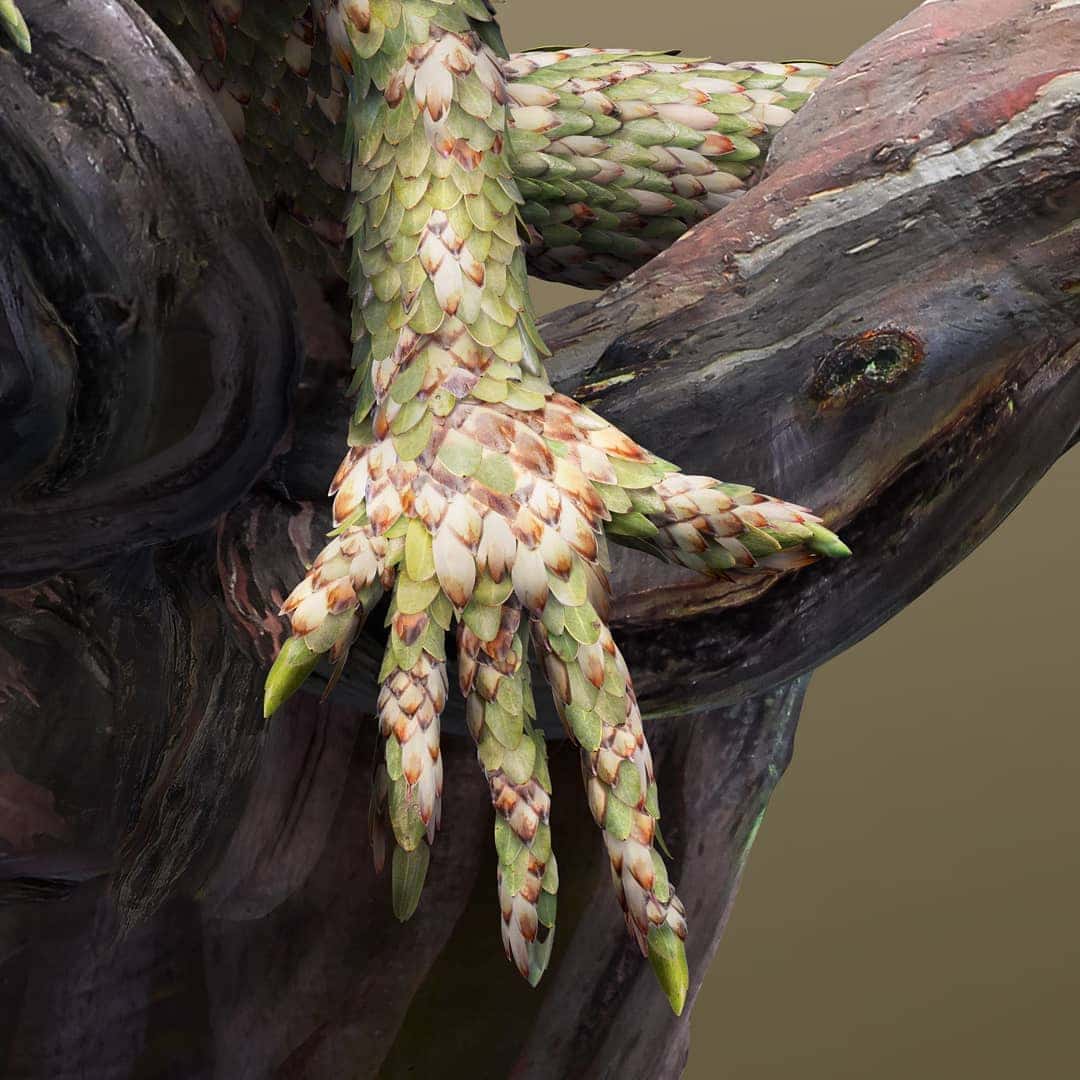
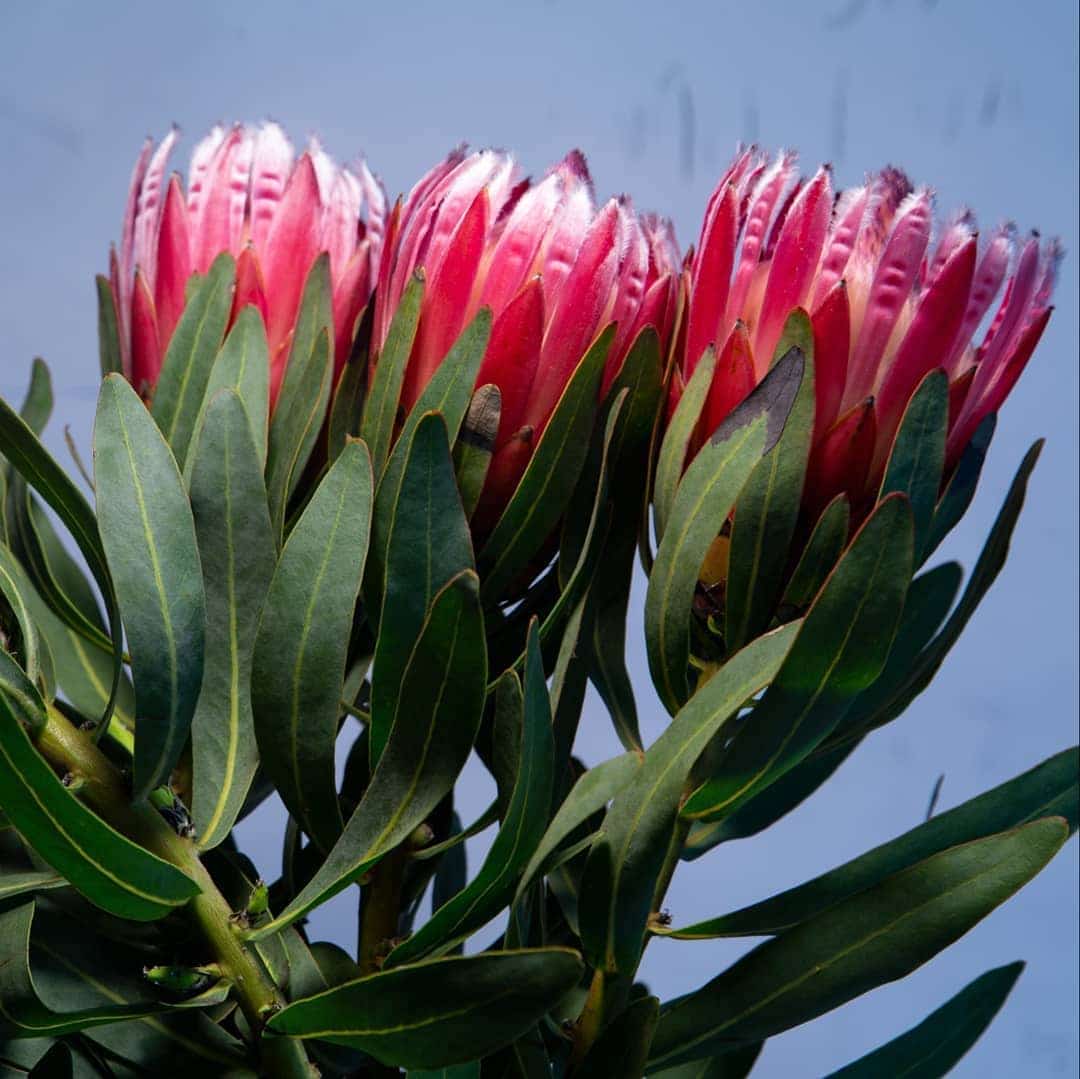
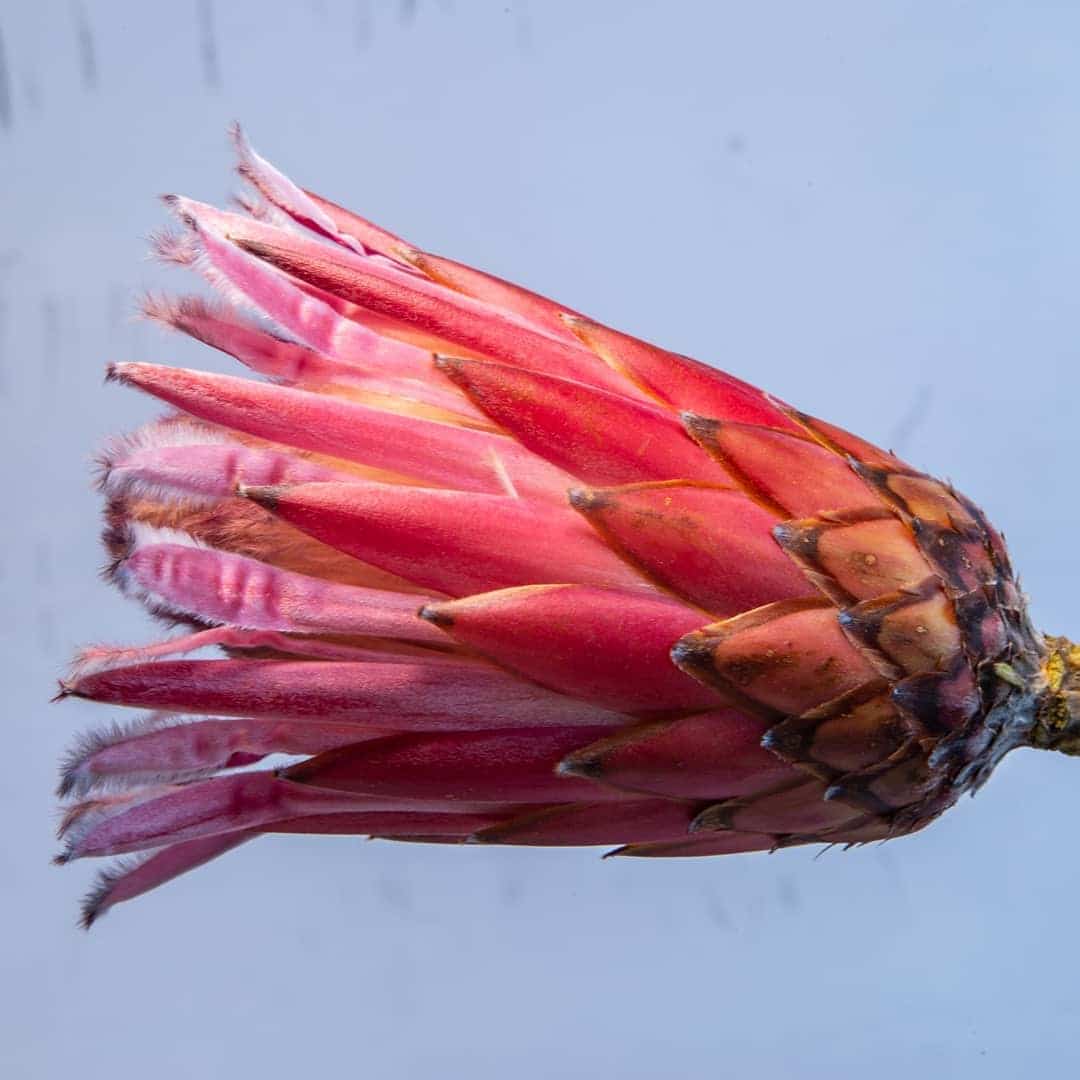
The artist's Terraform series is a visual reminder of the visible patterns found in nature.
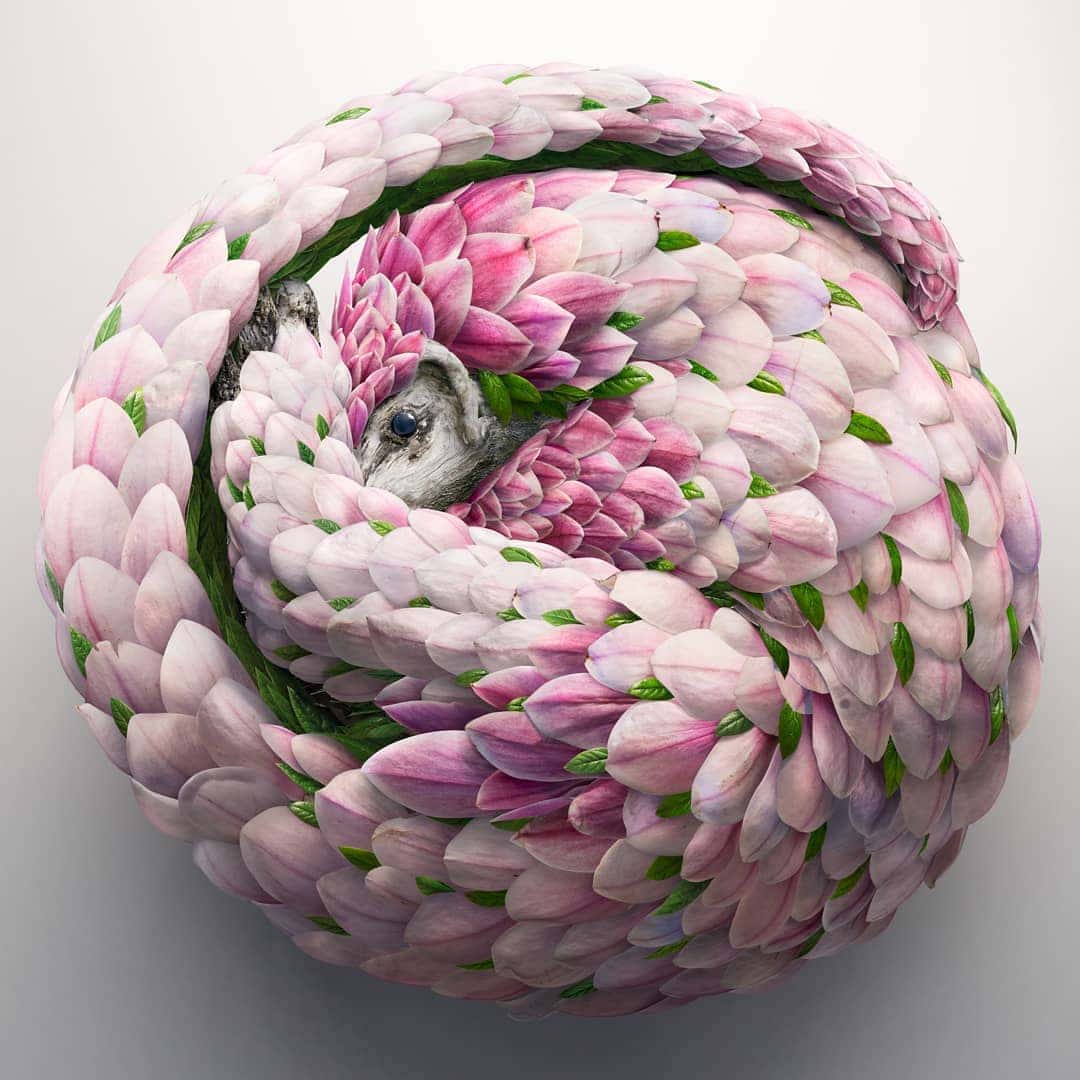
Overlapped petals look just like scales!
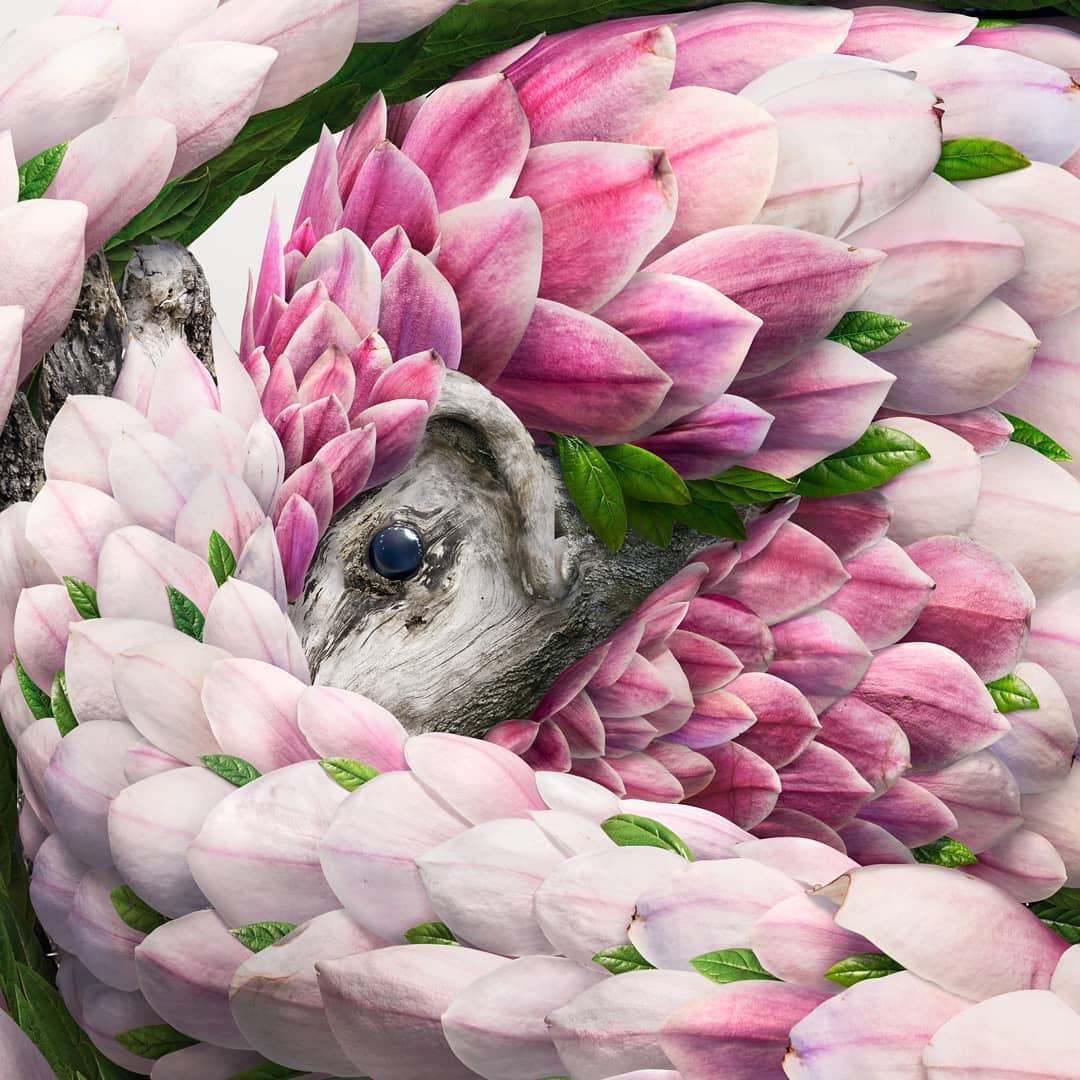
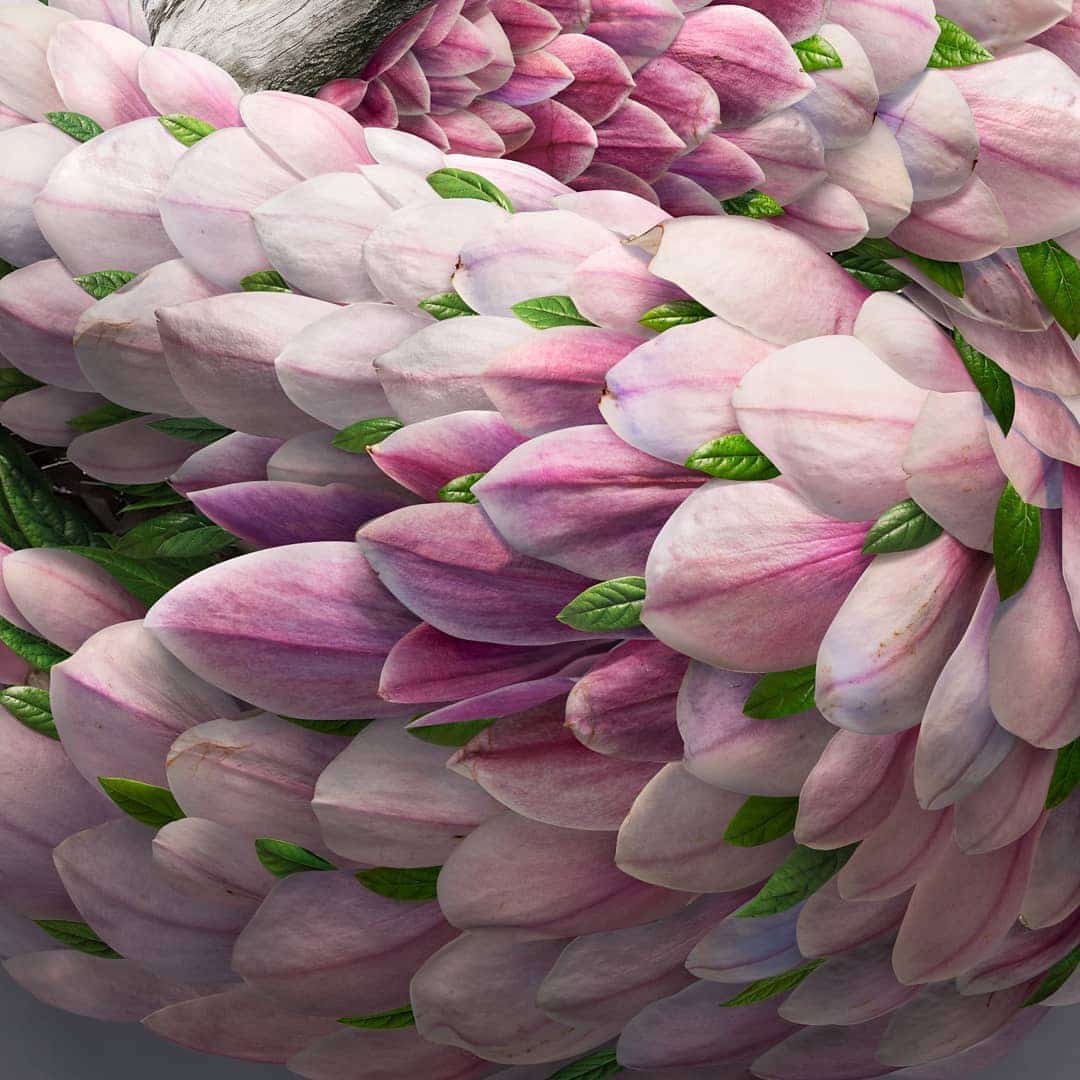
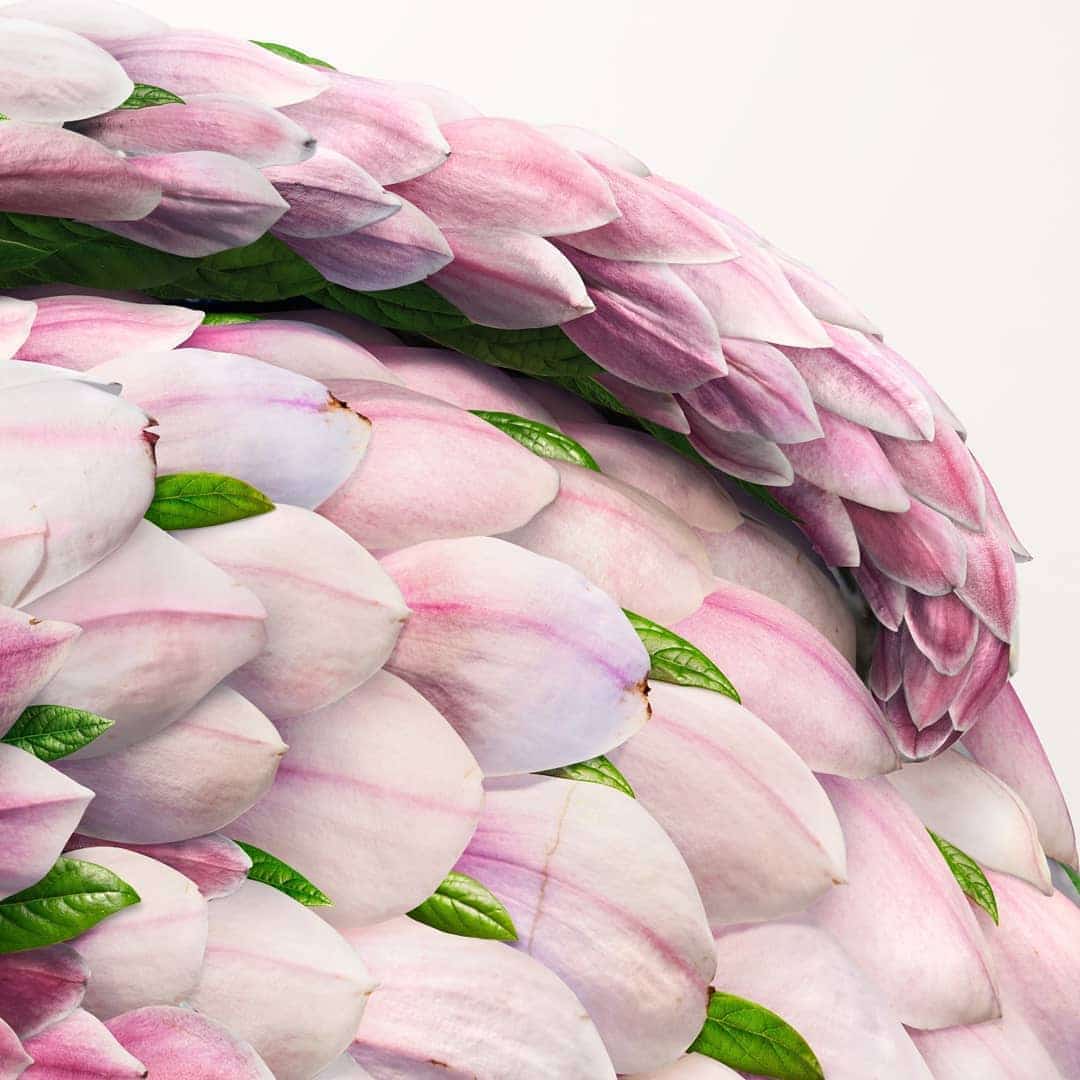
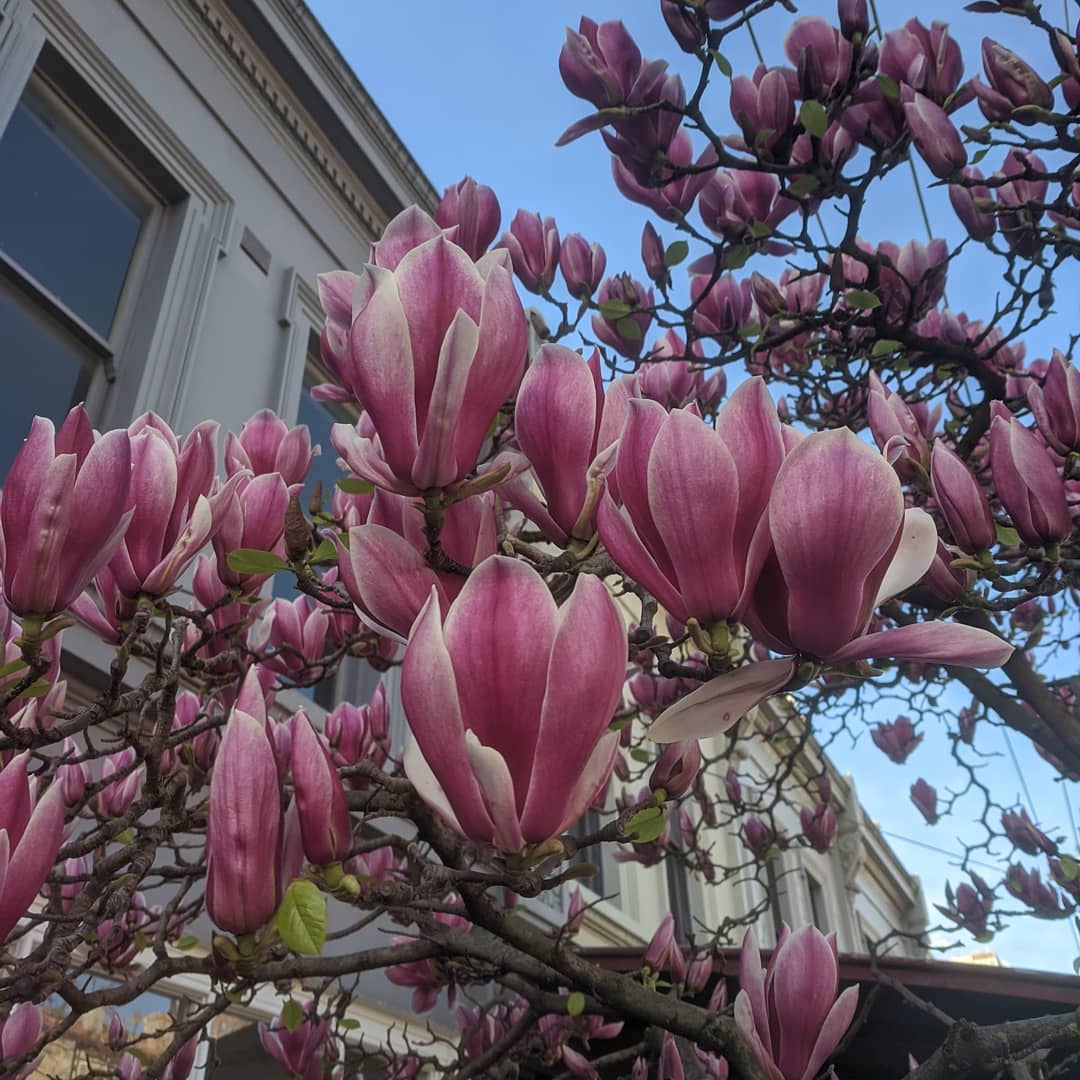
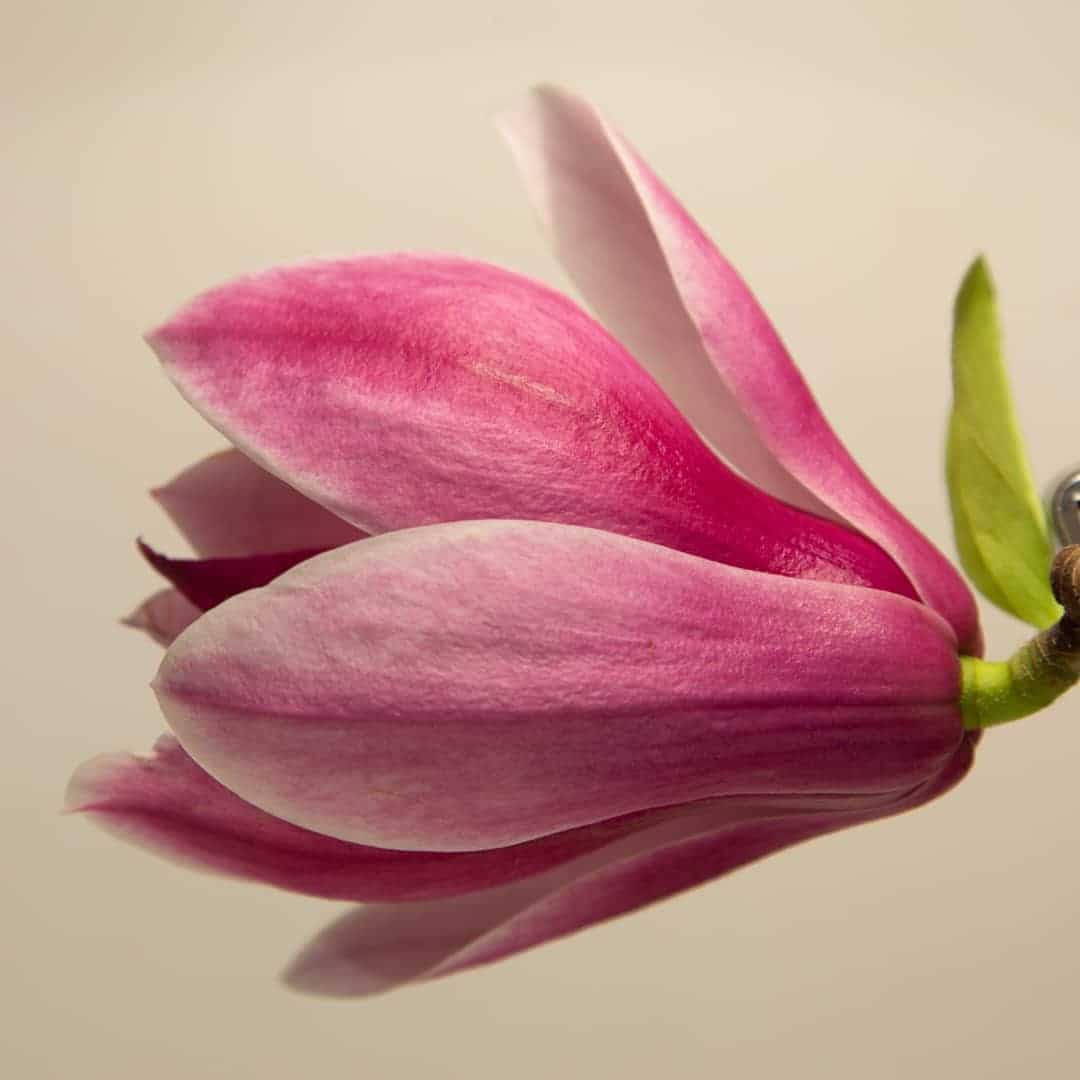
And leaves look just like colorful feathers.
